You may have learned that for taking good astrophotos, you need a polar aligned mount preferably a german equatorial mount. But with new high quality Alt-Az mounts, this is no longer true. New technologies introduced in Alt-Az mounts mean they can deliver precise equatorial tracking while maintaining the basic advantages of the Alt-Az mount (read more about these advantages and a comparison to Polar aligned mount here).
Tracking needed for precise astrophotography
One of the first challenges when taking astrophotos is to achieve good tracking. Without good tracking of the object imaged, the rest doesn’t matter. Top quality optics, super sensitive low noise camera, everything collimated and aligned perfectly – all this will not help you if the tracking is bad.
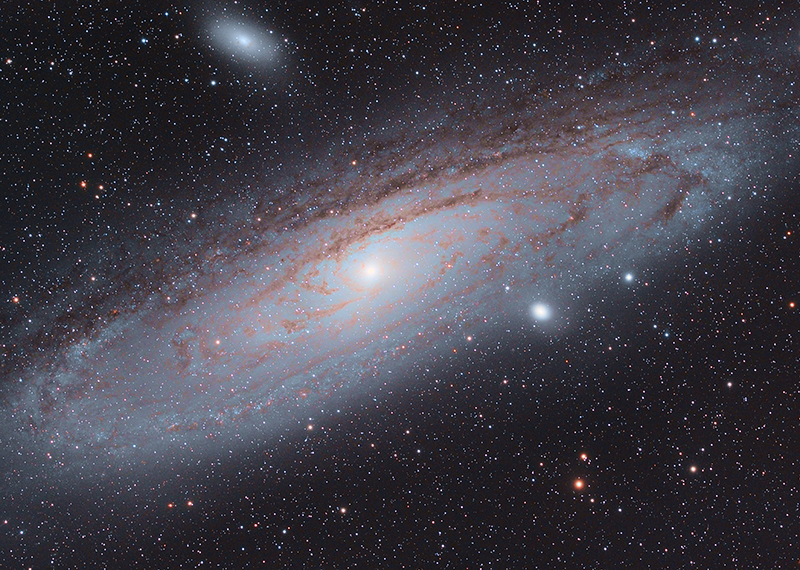
Tracking the sky means that the telescope must continually be pointing at the exact same point in the sky. The stars rise in east and set in west and the telescope mount must have a movement pattern following them all the way.
The polar aligned parallactic mount handles most of this in the setup process. After carefully aligning the polar axis to be parallel with the Earth rotation axis, it is possible to track the sky by rotating the Polar axis at the correct constant speed. A solution that made it possible in the old days to have a mechanical clock running the mount. And the alignment of the polar axis also secures that no field rotation (explained below) takes place. But leveling and polar aligning the mount takes time and is not always easy.
The Alt-Az mount calculates the movement pattern in the alignment process. The mount can be setup without any leveling of any kind. When powered up, the mount is aligned on two known objects creating the information needed for precise tracking of the sky. Based on that information, a basic Alt-Az mount can track a single object across the sky with great precision. The movement pattern of the basic Alt-Az mount will on the other hand result in field rotation. Setting up and aligning an alt-Az mount is very simple to do – a lot easier than polar aligning a GEM.
Field rotation
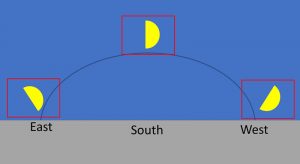
If you watch the half moon rise in east, you will typically see the moon terminator at an angle not being vertical. If you look again later when the moon has reached south (or north), you will notice that the terminator now is vertical. When the moon reaches the western horizon, the terminator is again angled to the horizon and in the opposite direction to when it rised in east. This phenomenon where the sky changes its angle to the horizon is called Field rotation.
The Alt-Az telescope mount moves around a vertical and a horizontal axis. Therefore, a camera placed on an Alt-Az mount will keep it’s angle in relation to the horizon and terrestrial objects. But if you point the camera at the moon and takes 3 images: in east, south and west the moon will have different angles on the pictures even though the mount has tracked perfectly and kept the moon centered in the pictures.
In a coming articles the details of Field Rotation will be covered in details.
Long exposure astrophotography with Alt-Az mounts
With modern technology it is very easy to eliminate field rotation and achieve true equatorial tracking with Alt-AZ mounts. And with the fast technological development within astronomy equipment this is continuously getting even easier. To eliminate the field rotation two solutions are available today.
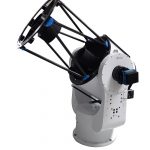
The first solution is the introduction of a camera rotator. It is a device installed on the telescope allowing for automatic rotation of the camera around the optical axis. When tracking the sky this rotator will track the field rotation exactly as the mount tracks the azimuth and altitude. This is the solution used on all larger professional telescopes and some larger amateur telescopes. Using the camera rotator also adds the advantage that the framing of objects and picking of guide stars can be done remotely/automatic. When using a camera rotator guiding must be done off axis through the imaging telescope. Several companies are offering camera rotators.
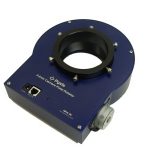
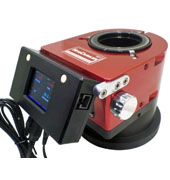
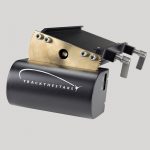
The second solution to eliminate field rotation is the Telescope rOTAtor. It is an invention I made for the Panther mount from Track The Stars. The idea is to rotate the entire telescope OTA on the mount including any piggyback mounted equipment. The basic functionality is the same as the camera rotator – when the mount tracks an object the Telecope rOTAtor tracks the field rotation.
The main difference from the camera rotator is that a piggybacked guide telescope can be used for guiding and a piggybacked DSLR camera will also track the sky equatorially. For a transportable setup, this can be a great advantage.
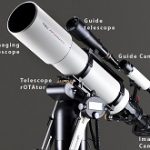
The Telescope rOTAtor has a certain rotation angle and must be reset every 1-3 hours depending on where in the sky the object is located. It is possible to take single subs as long as you normally want (up to 1 hour or more). For a large total integration time, the rOTAtor must be reset as needed.
The quick and easy way of stacking short subs
If you are new to astroimaging or just want to have the easiest solution at the telescope, stacking of multiple short exposures might be the way to go. All you have to do is setup and align your mount. Then focus and frame your target. Now, you can start taking short subs. If you keep the subs short, no guiding is needed and field rotation will not show up on the individual subs (more on this in a future post). Typically, you can have subs up to 30 seconds without any visible field rotation and if you image in east and west your subs can be much longer. Of course, the unguided tracking accuracy of your mount must be
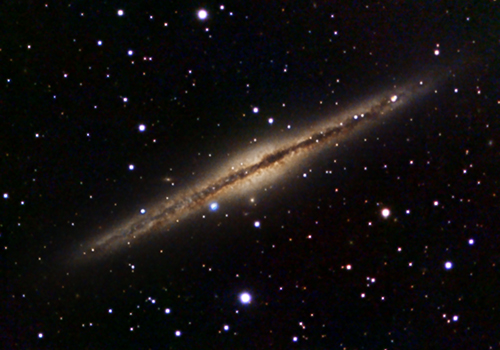
taken into account too. To get the best resolution, you can guide the mount to get the most precise tracking.
The subs will of course show field rotation between the frames, but most of the stacking software programs available will handle this and align the images perfectly. With the new low noise cameras, very impressive results can be made using this simple principle.
In the coming posts, I will go into more details with these different astrophotography techniques. Stay tuned.